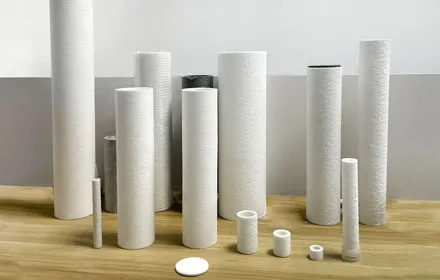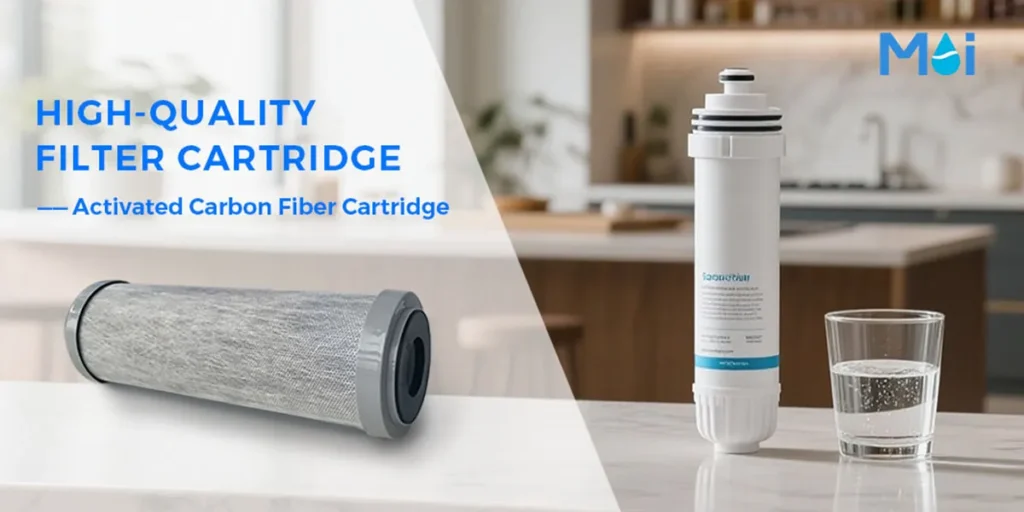Maintaining clean, safe water in your home or workplace begins with regular filter cartridge replacement. While the standard recommendation is every 3–6 months, the actual timing can vary based on filter type, water quality, and daily usage. In this comprehensive guide, we’ll walk you through everything you need to know about replacing filter cartridges to keep your water system running at peak performance.

Why Filter Cartridge Replacement Is Important
Neglecting filter cartridge replacement can lead to:
Reduced water pressure and flow
Unpleasant-tasting or cloudy water
Damage to appliances like refrigerators and HVAC systems
Increased maintenance and replacement costs over time
Routine: Change your filter cartridge to ensure clean water, protect your health, and extend your equipment’s lifespan.
Filter Cartridge Replacement Schedule by Filter Type
Different filters have different lifespans. Here’s a breakdown to help you stay on schedule:
1. Sediment Filters (PP melt-blown filter elements)
Role: Trap dirt, rust, and sand.
Frequency: Every 3–6 months
Tip: Replace sooner if water appears cloudy or contains many particulates.
2. Carbon Filters
Role: Remove chlorine, odors, and organic compounds.
Frequency: Every 6–12 months
Tip: Activated carbon degrades over time; never exceed 12 months.
3. Reverse Osmosis (RO) Membranes
Role: Remove dissolved solids like lead and arsenic.
Frequency: Every 2–3 years
Tip: Change pre-filters (sediment and carbon) every 6–12 months to protect the RO membrane.
4. Whole-House Filters
Role: Protect plumbing systems and home appliances.
Frequency: Every 6–12 months, depending on usage and water hardness.
Top 5 Factors That Affect Filter Cartridge Replacement Timing
Water Quality
Hard or contaminated water leads to faster filter saturation. Test annually for TDS (Total Dissolved Solids).
Household Water Usage
Higher usage = quicker need for filter cartridge replacement. A family of five will wear out filters faster than a single occupant.
Filter Quality & Brand
NSF-certified, high-quality filters last longer. Lower-cost cartridges may require more frequent replacement.
Physical Condition of Filter
Cracks, discoloration, or slime on the filter are signs you need a filter cartridge replacement.
Water Pressure Changes
A significant drop in flow may indicate a clogged cartridge.
Signs your filter cartridge needs replacing
Unpleasant Taste or Smell: Metallic or earthy odors can signal a failing filter.
Cloudy Water: May indicate sediment or bacteria bypassing the cartridge.
Smart Filter Alerts: Use built-in indicators if available.
Follow Manufacturer Recommendations: Always refer to your manual for proper filter cartridge replacement intervals.
3 Tips to Extend the Life of Your Filter Cartridge
Use Pre-Filtration Systems
Add a sediment pre-filter to reduce load on your main cartridge.
Clean Reusable Filters Regularly
If your system uses reusable cartridges, clean them monthly.
Monitor Water Quality
Affordable water test kits help track contaminant buildup.
FAQs
Q: Can I clean and reuse my filter cartridge?
A: Only if labeled as reusable. Most filters are single-use and should be replaced once saturated.
Q: What happens if I skip filter cartridge replacement?
A: Contaminants pass through, risking health and damaging your plumbing and appliances.
Q: How about refrigerator water filters?
A: Yes, most require filter cartridges replacement every 6 months. Refer to your fridge model’s manual.
Final Takeaway
Timely filter cartridge replacement is essential to maintaining safe, great-tasting water and protecting your appliances. While 3–6 months is a common guideline, always consider your water quality, usage, and filter type for best results.
Need Help With Filter Cartridge Replacement?
Contact our team today for expert guidance and product recommendations tailored to your needs.

